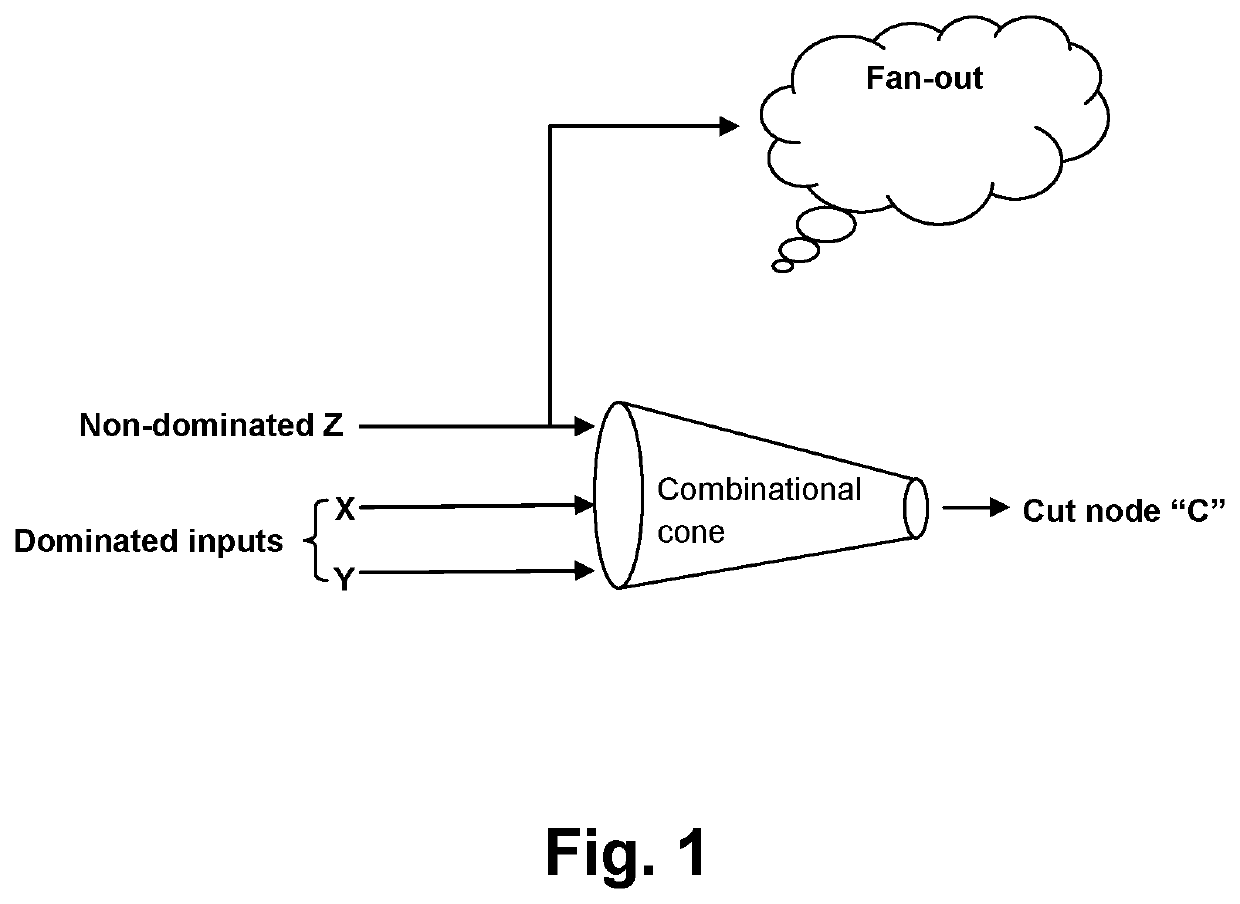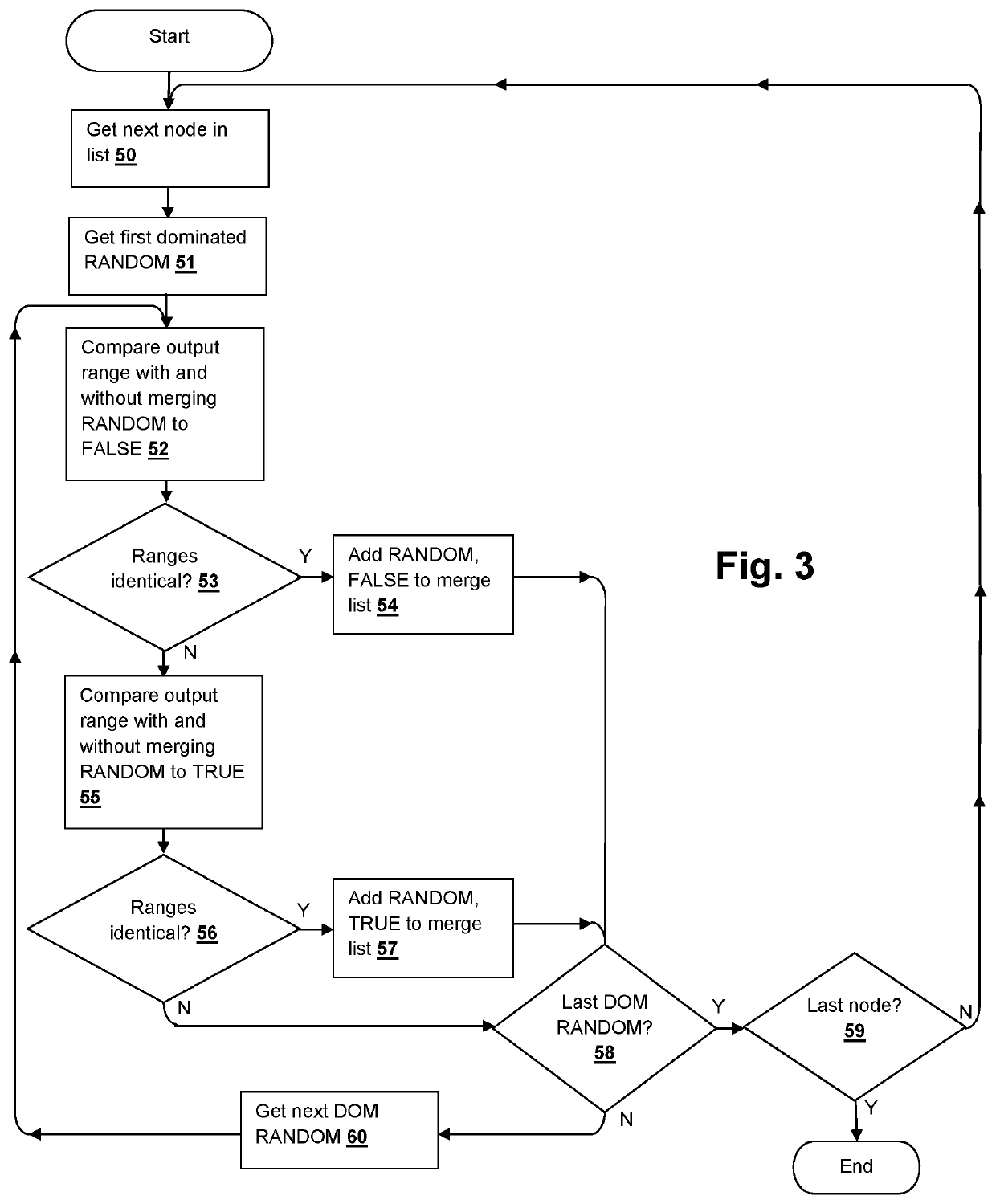Verification complexity reduction via range-preserving input-to-constant conversion
a range-preserving input and constant conversion technology, applied in the field of circuit verification techniques, can solve the problems of complex design, large and complex design complexity, and the complexity of complex verification of such complex systems has grown to be extremely challenging
- Summary
- Abstract
- Description
- Claims
- Application Information
AI Technical Summary
Benefits of technology
Problems solved by technology
Method used
Image
Examples
Embodiment Construction
[0017]This disclosure presents novel techniques that reduce the complexity of verification through reducing the size of the testbench. By merging certain primary inputs to constant values, constant propagation and other logic optimization techniques can be applied to further reduce testbench size and verification complexity. Specifically, the disclosed approach identifies the set of primary inputs which are dominated by certain intermediate nodes (dominator set) and determines whether the primary inputs can be merged to 0 / 1, i.e., replaced with a true or false constant value, by comparing range computations on the dominator set (i.e., the set of producible values at the dominator set), with and without candidate reductions. The methods disclosed herein can be considered as computing and comparing two ranges: first leaving the primary inputs intact, then re-computing after merging the primary inputs to either 0 / 1, and if these ranges are equal, the corresponding primary inputs may be...
PUM
 Login to View More
Login to View More Abstract
Description
Claims
Application Information
 Login to View More
Login to View More - R&D
- Intellectual Property
- Life Sciences
- Materials
- Tech Scout
- Unparalleled Data Quality
- Higher Quality Content
- 60% Fewer Hallucinations
Browse by: Latest US Patents, China's latest patents, Technical Efficacy Thesaurus, Application Domain, Technology Topic, Popular Technical Reports.
© 2025 PatSnap. All rights reserved.Legal|Privacy policy|Modern Slavery Act Transparency Statement|Sitemap|About US| Contact US: help@patsnap.com



